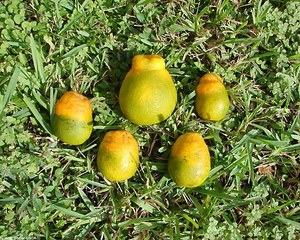- Author: Ben Faber
Asian citrus psyllids transmit a disease that can ruin your oranges. Even worse, Argentine ants protect them in exchange for the psyllids' delicate ribbons of sugary poop, called honeydew. So, researchers are helping orange growers fight back with invisible lasers, ghastly wasps and more trickery.
A tiny insect called the Asian citrus psyllid is threatening your oranges, lemons and limes. Smaller than a grain of rice, the agricultural pest sucks the sap from citrus trees and in doing so spreads a disease that ruins the fruit and eventually kills the citrus trees. “It's pretty straightforward to tell if you have an Asian citrus psyllid infestation in your citrus,” says Mark Hoddle, who leads a laboratory at UC Riverside that studies the pest and how to beat it. “Just check the tender young green leaves at the tips of the branches. If you see the white curly cues, the insect poop dripping off of those leaves, that's almost certainly a characteristic symptom of an Asian citrus psyllid infestation.” Hoddle's team is studying novel ways to keep psyllids out of citrus orchards, but that task is complicated by the psyllid's relationship with another insect, the Argentine ant. “Their relationship is rather sinister,” says Hoddle. “The Argentine ants harvest the honey dew that the Asian citrus psyllid nymphs excrete because it's nice and sugary and the ants love eating sugar. In return for providing that sweet delicacy, the ants protect the Asian citrus psyllids from their natural enemies like the predators and the parasitic wasps that we have introduced from Pakistan.” “The psyllids need protection from the ants because they lack defense systems,” says Hoddle. “They have recruited mercenaries to protect them.” So to protect the valuable citrus industry, Hoddle and his team are going after the psyllids' ant bodyguards.
https://www.youtube.com/watch?v=MtPXows1FWs
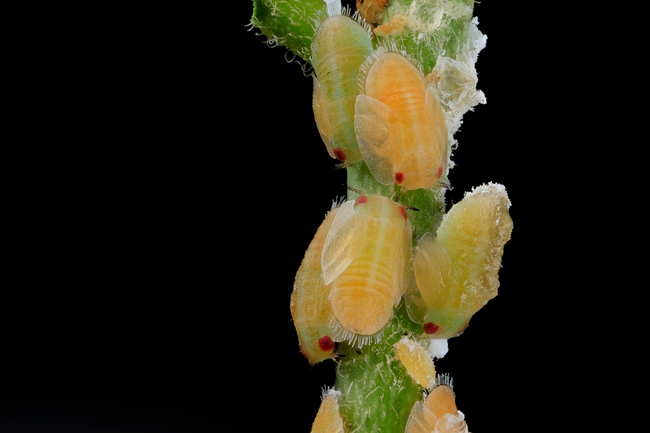
- Author: Ben Faber
|
|||||||||||||||||||
|
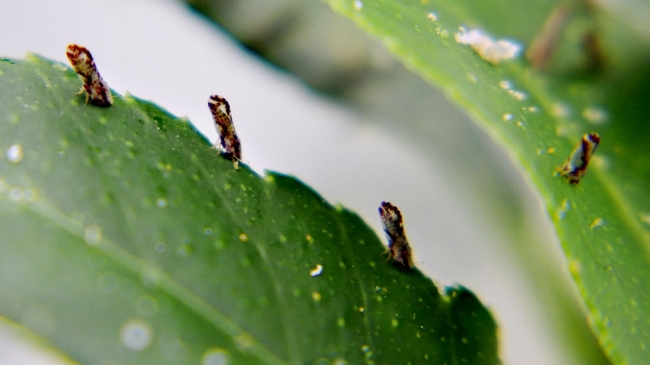
- Author: Ben Faber
|
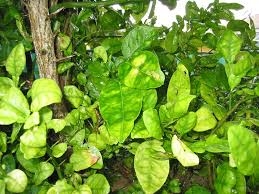
- Author: Ben Faber
Texas A&M AgriLife researchers have made a discovery that will help combat fastidious pathogens, which cost U.S. agriculture alone billions of dollars annually.
For the past few years, Kranthi Mandadi, Ph.D., a Texas A&M AgriLife Research scientist and associate professor in Texas A&M's Department of Plant Pathology and Microbiology, along with his colleagues, has been working on developing new biological technologies to fight fastidious or “unculturable” pathogens. Mandadi and members of his team are based at the Texas A&M AgriLife Research and Extension Center in Weslaco.
The results of their work, “Plant hairy roots enable high throughput identification of new antimicrobials against Candidatus Liberibacter spp.” were recently published in Nature Communications.
Fastidious plant diseases and their costs
Fastidious plant pathogens infect citrus, tomatoes, potatoes, grapes, peppers and other crops grown throughout Texas. Often transmitted by insect vectors, these disease agents cause billions of dollars of damage each year. The U.S. citrus industry alone would save $3 billion per year through control of just one of these diseases — citrus greening. Additionally, the fastidious pathogen that causes Pierce's Disease in grapes is the No.1 threat to the $1 billion wine industry in Texas.
“Currently, invasive fastidious pathogens are causing several major outbreaks in row crops, specialty crops and citrus, with immense costs to Texas and the U.S.,” said Juan Landivar, Ph.D., director of the AgriLife center at Weslaco, which has been involved in efforts to combat fastidious plant pathogens for many years.
Landivar said an expanded effort against fastidious plant diseases would protect the health of crops, environments, economies and people across the country.
A way to grow “unculturable” bacteria
Some plant pathogens can be grown as pure cultures in the laboratory in the presence of artificial nutrient solutions. Being able to culture disease agents in the lab facilitates their study by providing researchers with a reliable supply of experimental material. However, an estimated 99% of bacteria in the world are fastidious, or unable to grow outside their native environment.
“The greatest obstacle to understanding and controlling fastidious pathogens was the inability to cultivate them in a laboratory setting and to screen for lots of potential therapies,” said Leland “Sandy” Pierson, Ph.D., professor and head of Texas A&M's Department of Plant Pathology and Microbiology. “But Dr. Mandadi and his team have developed a breakthrough method as an alternative means to propagate fastidious bacteria. These bacteria are believed to be responsible for Huanglongbing, also known as citrus greening disease, and other insect-vectored diseases such as potato zebra chip and tomato vein greening disease.”
The breakthrough came in the form of the “hairy root” system. This technology utilizes the pathogen-infected host tissues to produce so-called hairy roots that can serve as biological vessels for the propagation of these pathogens in the laboratory.
“Classical microbiological techniques developed early in the 19th century cultured animal and mammalian viruses in host cells, tissues and embryonated eggs,” Mandadi said. “In a similar manner, we hypothesized that plant hairy roots could be suitable for propagating fastidious pathogens. And indeed, hairy roots supported the accumulation and growth of fastidious plant bacteria.”
Microbial hairy roots appear similar to normal root tissues that develop from the plant and mimic a bacterium's natural environment, he said. This allows the growth of the fastidious pathogens in controlled laboratory conditions.
Expedited screening for antimicrobial treatments
While microbial hairy root cultures are not traditional “pure” test tube cultures, they allow on-demand access to the fastidious bacterium in the laboratory. This enables the expedited screening of diverse antimicrobials like chemical inhibitors, immune modulators as well as gene/CRISPR-based therapies.

Other advantages are that hairy root cultures are easy to produce in the laboratory and can be maintained for several months to a year in laboratory growth chambers. Depending on the pathogen and the efficacy of screening, it is also at least four times faster than conventional screening methods, according to Sonia Irigoyen, Ph.D., and Manikandan Ramasamy, Ph.D., both AgriLife Research scientists and co-authors of the study.
In addition, the hairy root bioassays are scalable, so they can be used to pre-screen from a few to several hundred potential therapies simultaneously in a high-throughput manner. The microbial hairy root system can also be used to obtain mechanistic insights into antimicrobial function.
“Use of this technique has already led to the discovery of six new antimicrobial peptides with proven efficacy in plant materials,” Mandadi said. “These antimicrobials, either singly or in combination, could be used as near- and long-term therapies to control citrus greening, potato zebra chip and tomato vein greening diseases.”
Collaborators in the fight
“Typically, the type of breakthrough Dr. Mandadi and his team came up with is unusual for a university system off-campus center, as such centers usually have limited personnel and resources,” Landivar said. “Fortunately, the support we have received from the Texas A&M University System and other funding agencies and collaborators has helped make it possible for the Weslaco center to perform this world-class-level research.”
Besides a team of researchers at the Weslaco center, Mandadi collaborates with scientists at Texas A&M University, Texas A&M University Kingsville-Citrus Center, University of Florida, University of California System, and industry stakeholders including Citrus Research and Development Foundation, Texas Citrus Pest and Disease Management Corporation, Bayer and other entities.
Southern Gardens Citrus, a subsidiary of U.S. Sugar in Florida, has partnered with Texas A&M to commercialize the hairy root system as well as new therapies for application in the field.
Landivar also said funding from the U.S. Department of Agriculture National Institute of Food and Agriculture's Emergency Citrus Disease Research and Extension program, NIFA ECDRE, and support from the Foundation for Food and Agricultural Research and AgriLife Research's Insect-Vectored Disease Grant are making it possible to facilitate development of innovative technologies and discovery of therapies to combat diseases caused by fastidious bacteria.
To expand on his research, Mandadi recently partnered on a new project with Citrus Research and Development Foundation, Bayer, Southern Gardens Citrus, University of Florida and University of California-Davis. That project is funded by the NIFA ECDRE program. The overall goal is to bring together academics, growers and agrochemical industry to discover, develop and commercialize therapies for citrus greening disease.
Mandadi said use of the hairy root system has already been instrumental in finding several potential new treatments for citrus greening and potato zebra chip, as described in the Nature Communications article.
“We hope this technology can be further expanded to find even more therapies against current and emerging fastidious pathogens and, ultimately, with the support of industry, deploy them as field-ready products,” he said.
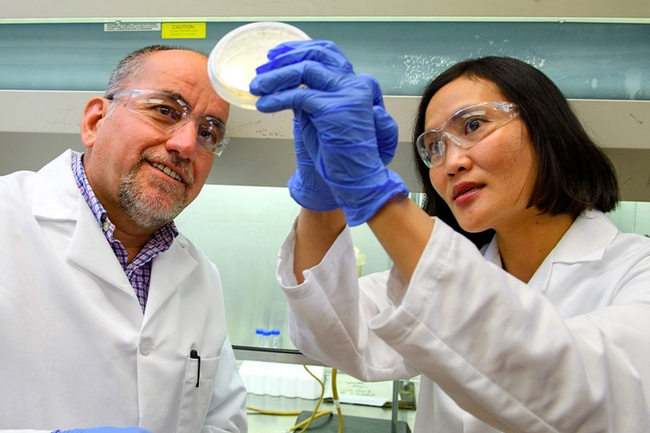
- Author: Ben Faber
A recent Ventura County ACP-HLB Task Force sponsored webinar was held, the topics and speakers listed below The PDF's from the speakers are available online
Webinar Agenda 8-13-20
|
9:30 a.m. |
Welcome, and update on status of HLB in California: Leslie Leavens, chair, Ventura County ACP-HLB Task Force. |
|
9:45 a.m. |
Update on area-wide participation rates and CDFA buffer treatments: Sandra Zwaal, Ventura County Grower Liaison |
|
10 a.m. |
Final report on 2017-2020 ACP surveying project in Ventura County, and overview of Phase Two research: Beth Grafton-Cardwell, IPM Specialist and Research Entomologist, University of California-Riverside, and Director of Lindcove Research and Extension Center (retired); and Monique Rivera, Assistant Extension Specialist, Department of Entomology, UC Riverside. |
|
10:40 a.m. |
Final report on deployment of detection canines to scout Ventura County commercial groves for evidence of early HLB infection: John Krist, CEO, Farm Bureau of Ventura County. |
|
11 a.m. |
Implications of canine detection data for HLB management in Ventura County commercial citrus: Neil McRoberts, western regional director, National Plant Diagnostic Network, and professor of plant pathology, UC Davis. |
|
11:30 a.m. |
Adjourn |
For more information, contact us by email at taskforce@farmbureauvc.com.
